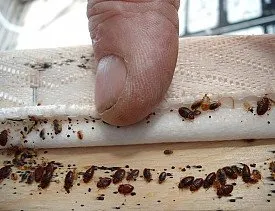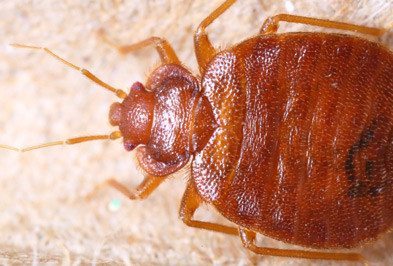Professional Bed Bug Exterminator: DC Providers and Heat Treatment
Professional Bed Bug Exterminator: DC Providers and Heat Treatment
Blog Article
Discovering the Science Behind Bed Pest Warm Treatments as a Sustainable Pest Management Technique
In the world of parasite monitoring, the mission for lasting and efficient solutions remains a constant pursuit. One such method that has actually gained grip in the last few years is the usage of warm treatments to deal with bed insect infestations. By harnessing the science behind thermal fatality factors for these persistent parasites, warm treatments use an encouraging choice to standard chemical-based techniques. The complexities of just how warm efficiently removes bed pests and the broader implications for lasting pest monitoring practices make this a subject worth checking out further.
Bed Pest Warmth Therapy Refine

Thermal Fatality Factor for Bed Insects
Exposing bed bugs to elevated temperatures beyond their thermal resistance array is critical for attaining reliable eradication in warmth therapy procedures. By getting to and preserving temperatures above the thermal fatality factor for bed insects, bug administration experts can guarantee comprehensive elimination of bed pest populaces, including hard-to-reach areas where chemical treatments might be much less efficient. Understanding the thermal death factor for bed insects is necessary for executing successful warmth treatment strategies and attaining lasting insect management end results.
Benefits of Heat Treatments
Having established the critical thermal fatality point for bed bugs, it is important to now discover the considerable advantages that heat therapies provide in effectively getting rid of these durable insects. Warmth therapies present several vital benefits when contrasted to standard chemical methods. One of the primary benefits is that heat can pass through deep into splits and crevices where bed insects hide, ensuring that even one of the most hard-to-reach areas are heated up to dangerous temperatures. This thorough method not just kills real-time bugs however additionally targets bed bug eggs, stopping future infestations.
In addition, warmth therapies are non-toxic and ecologically pleasant, making them a lasting pest management technique. Unlike chemical pesticides, warm therapies do not leave harmful residues that can position dangers to human health and wellness or the atmosphere. This element is especially essential in sensitive settings such as medical facilities, schools, and property areas where chemical use may not be desirable.
Additionally, heat therapies have a high success price in removing bed pest problems in a solitary therapy, minimizing the requirement for several check outs and reducing interruption to owners. This efficiency not only conserves money and time yet likewise supplies satisfaction to those handling bed pest troubles.
Performance of Warm Therapy

Warmth therapies have actually the added benefit of killing bed pest eggs, which are frequently resistant to conventional chemical treatments. Overall, the efficiency of warm therapies in getting rid of bed pest problems makes them a sustainable and reputable parasite monitoring approach.
Lasting Pest Management Benefits
Implementing lasting parasite administration practices offers lasting advantages for both the environment and public health. By making use of approaches such as warm treatments for parasite control, we can minimize the reliance on harmful chemical pesticides that can have damaging impacts on communities and human health - exterminator. Lasting bug management approaches assist in preserving biodiversity by targeting certain pests without damaging non-target organisms, thereby keeping a balanced Read Full Report environment
Additionally, lasting insect monitoring practices add to the general health and wellness of the public. By reducing exposure to poisonous chemicals utilized in typical pest control approaches, heat therapies provide a much safer choice for insect monitoring in residential, industrial, and public spaces. This decrease in chemical use also assists in preventing pesticide residues from infecting air, soil, and water, securing ecological quality.
Conclusion
In final thought, bed pest heat treatments have been revealed to be a sustainable and effective bug monitoring approach. The thermal death point for bed bugs makes them prone to visit this site warmth therapies, which have numerous advantages over conventional chemical treatments. The efficiency of warm therapies in eliminating bed pest infestations while reducing environmental impact highlights the capacity of this technique as a sustainable service for bug control.
The bed insect warm therapy procedure includes increasing the temperature level within ravaged locations to a level that successfully removes bed insects and their eggs. By getting to and preserving temperatures above the thermal death point for bed pests, parasite monitoring specialists can guarantee detailed elimination of bed insect populations, including hard-to-reach areas where chemical therapies might be much less efficient. One of the main advantages is that heat can permeate deep into holes and splits where bed pests conceal, guaranteeing that also the most hard-to-reach areas are heated to lethal temperature levels. Unlike chemical treatments that may leave behind resistant populaces, warm therapies use a non-toxic and ecologically pleasant service that can penetrate deep right into furniture, wall surfaces, and other hard-to-reach areas where bed insects a fantastic read conceal.
The thermal death point for bed bugs makes them susceptible to warmth therapies, which have countless benefits over conventional chemical treatments.
Report this page